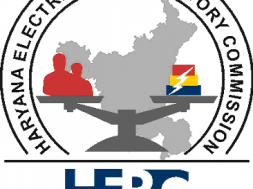
Power Density in Hybrid Energy Storage Systems – EQ Mag Pro
This article will cover new types of hybrid energy storage systems (HESS) with high power density and high energy density, as well as good power regulation methods.
What is a hybrid energy storage system?
Comparisons made between A-CAES and PTES systems for energy storage.
Fossil fuels, along with worries about protecting our fragile environment, are strongly driving efforts toward renewable-energy solutions like wind and solar energy. The problem is that these systems are unpredictable and intermittent, which will lead to the inability of meeting load demands of business industries and domestic customers.
We’re currently seeing a marked increase in penetration of renewable-energy sources, such as solar energy and wind, into the power grid. However, electrical energy storage (EES) systems also are receiving a great deal of attention by researchers. Some of these EES systems include adiabatic compressed air energy storage (A-CAES) and pumped thermal energy storage (PTES) systems, as well as power energy storage for weak power distribution grids with high-density distributed generation integration.

Hybrid Energy Storage Systems (HESS)
“More Electric Aircraft” High-Power-Density Optimal Configuration for HESS
The More Electric Aircraft (MEA) can use a HESS to minimize weight by applying the wavelet transform to configure HESS capacity.1 We will use the concept of equivalent time (CET) to build the relationship between the load power and storage cells to select an optimum storage type and cell.
Weight in an aircraft in flight will cause faster fuel consumption as well as emissions, on the order of 2%, out of all man-made CO2 emissions into the air.
More electrical devices, such as an electromechanical actuator (EMA), electro-hydrostatic actuator (EHA), de-icing devices, and an engine starter/generator, can be installed in the aircraft to enable more reliable and higher performance in energy conversion. Using such devices, in lieu of heavy mechanical options, will reduce the weight and volume of the aircraft.
Aircraft power fluctuations, caused by electrical devices, will exhibit randomness and intermittency while connected to the aircraft dc bus. For this reason, the wavelet transform is used to distribute load power that will have non-stability characteristics. To maintain the stability of the dc bus voltage, the HESS has been chosen to smooth out any power fluctuations.
Equivalent time (ET) is the ratio of energy to power (see figure). The ET of a battery, which will respond in a short time with a low amplitude energy output, is large. But, the ET of a supercapacitor, which has the capability of instantaneous and high amplitude power output, is much smaller.
Now we can select the best energy storage device when its ET matches the load power’s ET—when the load power’s ET is known. It doesn’t matter if a battery pack or supercapacitor pack is chosen. All are made of the same cells configured in a series and parallel combination, and the combined ET is the same as the cell’s ET.
In the figure, A and B represent the minimum and maximum values of the ET of supercapacitors. The minimum and maximum values of the ET of the batteries are expressed by C and D. Selecting the supercapacitor, as a single energy storage system, occurs when the load power’s ET is located in the area of “a” in the graph. In the same way, when in the “b” area, we choose the battery. However, when the load power’s ET is located in the area of “c” between B and C, we should choose the HESS, which consists of a combination of supercapacitors and batteries.
This approach will not only realize a high-power-density configuration of the HESS, but also may be used to optimize an energy storage system for micro-grid and electric vehicles, as well as the parameters for the design of a flywheel energy storage system.
A-CAES and PTES Power-Density Solutions
Adiabatic compressed air energy storage (A-CAES) extracts thermal energy generated when it’s compressed, then stores that energy prior to the storage of compressed air in either an underground cavern or underwater bags. During discharge, the air is heated from the thermal storage and expanded in a turbine.
Pumped thermal energy storage (PTES) functions as a heat pump during charging, pumping the heat from a cold reservoir to a hot reservoir. This process is reversed during discharge and works as a heat engine that converts stored thermal energy back into electricity. PTES is more sensitive to any loss than is A-CAES.
The thermo-economic performance of A-CAES is enhanced via the use of isobaric (underwater) air reservoirs or hybrid thermal energy storage (TES). However, the PTES can be improved by utilizing system pressurization, switchable compressors/expanders, and non-conventional working fluids.2 Heat recuperation can be used for A-CAES to enhance its power density and energy density.
Under pressurization, PTES variants can be almost as cheap as the underground A-CAES, but the PTES variants tend to have an efficiency of 50% to 60 %, while the efficiency A-CAES variants tends to be 70% to 80 %. However, PTES has a higher energy density (meaning a smaller plant footprint) and more freedom in siting. Smaller plant footprint can lead to better power density.
Summary
Energy storage devices usually have fast, flexible, and controllable power/energy two-way throughput capacity. This is best for fast and accurate power exchange with the power grid, and various generation units and user loads, to meet the power regulation requirements in different scenarios.
Presently, the common means of electric power energy storage are superconducting energy storage, pumped storage, flywheel energy storage, compressed air energy storage, accumulator energy storage, fuel cells, energy storage, supercapacitor energy storage, and more.
We’ve discussed only a sampling of these electrical energy systems. Some excellent additional papers are outlined in the “References” area below.
















